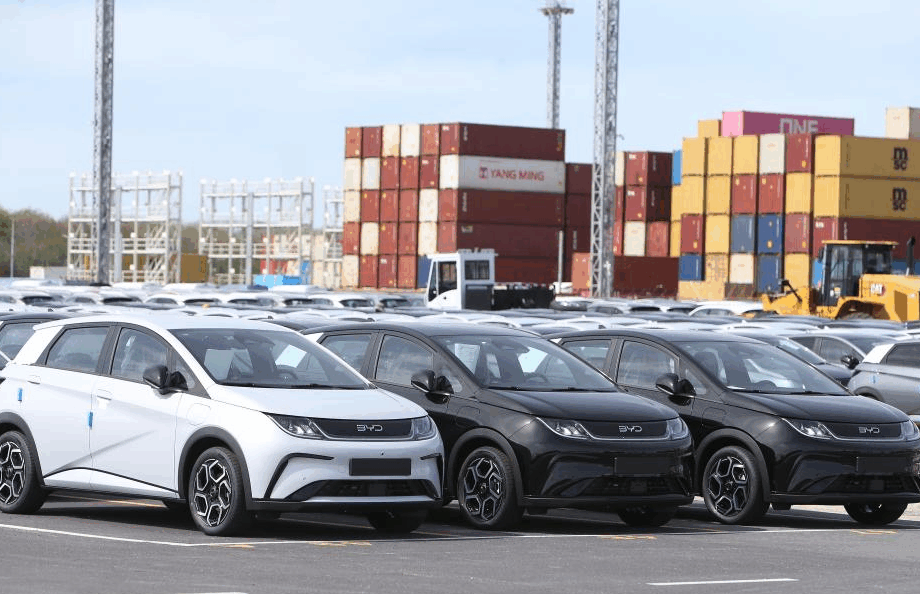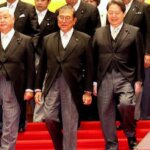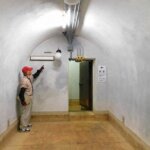BYD’s Bold Export Strategy: Thai-Made EVs Set Sail for Europe
In a landmark move for the global electric vehicle (EV) industry, Chinese automaker BYD has begun exporting vehicles manufactured in Thailand to Europe. Over 900 units of the BYD Dolphin, a compact electric hatchback, recently departed from Thailand’s Rayong province, heading for Germany, Belgium, and the United Kingdom aboard BYD’s own vessel, the BYD Zhengzhou. This shipment marks the first time BYD has exported Thai-made EVs to Europe, signaling a significant shift in the company’s international strategy and the broader dynamics of the global EV market.
- BYD’s Bold Export Strategy: Thai-Made EVs Set Sail for Europe
- Why Is BYD Exporting EVs from Thailand Instead of China?
- Inside BYD’s Rayong Plant: Thailand’s New EV Powerhouse
- How Do CKD Kits and Local Assembly Help Automakers Avoid Tariffs?
- BYD’s Global Expansion: Beyond Thailand and Europe
- Trade Tensions and Legal Challenges: The Broader Context
- Thailand’s Role in the Global EV Supply Chain
- What Does This Mean for the Future of the Global EV Market?
- In Summary
This development comes at a time when Chinese-made EVs face steep tariffs in the European Union (EU), prompting BYD and other automakers to rethink their manufacturing and export strategies. The move not only highlights Thailand’s growing role as a regional EV hub but also underscores the complex interplay of trade policy, industrial investment, and global competition in the rapidly evolving electric vehicle sector.
Why Is BYD Exporting EVs from Thailand Instead of China?
The primary driver behind BYD’s decision to export EVs from Thailand to Europe is the imposition of new tariffs by the European Union on Chinese-made electric vehicles. In July 2024, the EU introduced provisional anti-subsidy tariffs of up to 37.6% on Chinese EV imports, citing concerns over unfair trade practices and government subsidies that allegedly distort competition. For BYD, which cooperated with the EU’s anti-subsidy investigation, the additional tariff was set at 20.7%, on top of the existing 10% customs duty, bringing the total to 30.7% for vehicles shipped directly from China.
These tariffs significantly increase the cost of Chinese-made EVs in Europe, threatening the competitiveness of brands like BYD, Geely, and SAIC. In response, BYD has turned to its new manufacturing base in Thailand, where vehicles can be produced and exported to Europe at a lower tariff rate. By assembling cars outside of China, BYD can avoid the punitive duties and maintain more attractive pricing for European consumers.
This strategy is not unique to BYD. Other Chinese automakers, such as SAIC (owner of the MG brand), are also exploring ways to export vehicles from third countries to bypass trade barriers. The trend reflects a broader shift in global manufacturing as companies seek to navigate an increasingly complex web of tariffs and trade restrictions.
Inside BYD’s Rayong Plant: Thailand’s New EV Powerhouse
BYD’s Rayong factory, which began operations in July 2024, represents a $490 million investment and is the company’s first fully-owned passenger car plant outside of China. The facility boasts an annual production capacity of 150,000 vehicles, including both battery electric vehicles (BEVs) and plug-in hybrids. The plant is equipped with stamping, painting, welding, and final assembly lines, enabling BYD to produce vehicles for both the domestic Thai market and overseas exports.
Initially, the Rayong plant focused on assembling right-hand-drive Dolphins for Thailand and other ASEAN markets. However, with the recent shift to producing left-hand-drive models, the factory is now positioned as a key export hub for Europe and beyond. In July 2025, the plant celebrated its 90,000th vehicle milestone, just a year after opening, highlighting the rapid scale-up of operations.
Ke Yubin, general manager of BYD Thailand, emphasized the significance of this achievement:
“Following the delivery of our 90,000th NEV in July, we are once again achieving a breakthrough. The export of Thai-made Dolphin models to Europe for the first time not only represents another step forward in BYD’s globalisation strategy, but also underscores Thailand’s vital role in the global EV supply chain.”
The Thai government has played a crucial role in attracting EV investment, offering incentives such as reduced import and excise taxes for companies that commit to local production. Under the EV 3.0 scheme, automakers must offset imports with locally manufactured vehicles, with the minimum offset ratio rising from 1:1 to 1:1.5 in 2025. In July, the government allowed exports of locally built EVs to count toward this quota, providing relief to BYD and other manufacturers struggling to meet domestic sales targets amid a sluggish Thai auto market.
How Do CKD Kits and Local Assembly Help Automakers Avoid Tariffs?
One of the key strategies employed by BYD and other global automakers to navigate trade barriers is the use of Completely Knocked Down (CKD) kits. In this approach, vehicles are shipped in parts and assembled in the destination country. CKD assembly allows manufacturers to benefit from lower import duties and meet local content requirements, supporting both cost reduction and local job creation.
By producing vehicles in Thailand and exporting them to Europe, BYD can classify the cars as Thai-made, thereby avoiding the higher tariffs imposed on Chinese-made vehicles. This approach is not only a response to trade policy but also aligns with Thailand’s ambition to become a regional EV manufacturing hub. The country has attracted significant investment from Chinese automakers, including Great Wall Motor, SAIC-MG, Neta, GAC-Aion, Changan Automobile, and Omoda & Jaecoo, all seeking to leverage local incentives and access both domestic and export markets.
BYD’s Global Expansion: Beyond Thailand and Europe
BYD’s move to export Thai-made EVs to Europe is part of a broader global expansion strategy. Faced with plateauing sales in China and increasing trade barriers in major markets, the company is accelerating its international footprint. In addition to the Rayong plant, BYD is building new factories in Malaysia, Indonesia, Brazil, Hungary, and Turkey.
The upcoming Malaysian plant, located in the state of Perak, will cover 600,000 square meters and is expected to begin operations in the second half of 2026. Initially, it will assemble vehicles using imported CKD kits, further diversifying BYD’s manufacturing base in Southeast Asia. In Brazil, BYD launched vehicle production at a new plant in July 2024, and the company is also constructing facilities in Hungary and Turkey to serve European and Middle Eastern markets.
BYD’s global ambitions extend beyond manufacturing. The company has established local R&D, production, and sales centers in key regions, and has formed partnerships to promote EV adoption. For example, BYD plans to supply 100,000 EVs to Uber drivers globally and is expanding its presence in Africa and Latin America, where it sees significant growth potential.
Trade Tensions and Legal Challenges: The Broader Context
The surge in trade barriers against Chinese EVs is part of a wider geopolitical and economic contest. In addition to the EU’s tariffs, the United States raised import duties on Chinese-made EVs from 25% to 100% in May 2024, and Canada followed suit with a 100% tariff in August. These measures are driven by concerns over industrial subsidies, overcapacity, and the perceived threat to domestic industries.
China has responded with its own countermeasures, including anti-dumping actions targeting EU pork and brandy, and investigations into Canadian agricultural and chemical products. The escalation of tariffs and retaliatory actions has raised fears of a prolonged trade war, with potential consequences for global supply chains and consumer prices.
Chinese EV makers, including BYD, Geely, and SAIC, have challenged the EU’s tariffs at the Court of Justice of the European Union. The legal proceedings, which could take up to 18 months, focus on the assessment of subsidies, injury to EU industry, and the methodology used to calculate tariff rates. The China Chamber of Commerce for Import and Export of Machinery and Electronic Products (CCCME) has also filed a complaint, urging negotiations to avoid further escalation.
Despite these challenges, Chinese EV exports to the EU have continued to grow. In December 2024, shipments defied expectations by increasing, raising questions about the effectiveness of tariffs and the resilience of Chinese automakers. Analysts suggest that while tariffs may slow growth in some markets, they are unlikely to fundamentally alter China’s commitment to expanding its EV industry and global reach.
Thailand’s Role in the Global EV Supply Chain
Thailand’s emergence as a key player in the global EV supply chain is the result of deliberate policy choices and strategic investment. The country’s EV 3.0 scheme, launched in 2022, offers generous incentives to attract automakers, including tax breaks, subsidies, and support for local manufacturing. In return, companies must commit to producing EVs locally and meeting export quotas.
These policies have made Thailand the leading EV market in Southeast Asia, with sales growing rapidly despite a broader slump in the automotive sector. In the first half of 2025, EV sales in Thailand reached 54,084 units, up 61% from the previous year. BYD leads the domestic EV market, but the company and its peers face challenges in meeting production commitments due to weak local demand, high household debt, and intense price competition.
To address these challenges and fully utilize their manufacturing capacity, automakers like BYD are increasingly turning to exports. The ability to count exports toward local production quotas has provided much-needed flexibility, enabling companies to balance domestic and international sales while maintaining compliance with government requirements.
What Does This Mean for the Future of the Global EV Market?
BYD’s decision to export Thai-made EVs to Europe is emblematic of the shifting landscape of global manufacturing and trade. As countries impose new barriers to protect domestic industries, automakers are adapting by diversifying their production bases and supply chains. This trend is likely to accelerate as trade tensions persist and the demand for electric vehicles continues to grow worldwide.
For consumers, these developments could have mixed effects. On one hand, increased competition and local production may lead to lower prices and greater choice. On the other hand, ongoing trade disputes and supply chain disruptions could result in higher costs and uncertainty.
For Thailand and other emerging markets, the influx of investment from Chinese automakers represents both an opportunity and a challenge. While the creation of new factories and jobs supports economic growth, there are concerns about overcapacity, sustainability, and the long-term viability of export-driven strategies. Some experts question whether the rapid expansion of Chinese automakers, often supported by patient capital and government backing, is sustainable in the face of slowing global demand and intensifying competition.
In Summary
- BYD has begun exporting Thai-made Dolphin EVs to Europe to avoid steep EU tariffs on Chinese-made vehicles.
- The Rayong plant in Thailand, opened in 2024, is BYD’s first fully-owned passenger car factory outside China, with a capacity of 150,000 vehicles per year.
- EU tariffs on Chinese EVs prompted BYD to shift production to Thailand, leveraging local incentives and lower trade barriers.
- BYD’s global expansion includes new factories in Malaysia, Indonesia, Brazil, Hungary, and Turkey, as the company seeks to diversify its manufacturing base.
- Trade tensions between China and major economies have led to a wave of tariffs and countermeasures, with legal challenges ongoing in the EU.
- Thailand’s proactive EV policies have attracted significant investment, making it a regional hub for electric vehicle production and exports.
- The global EV market is undergoing rapid change, with automakers adapting to new trade realities by relocating production and expanding into emerging markets.




